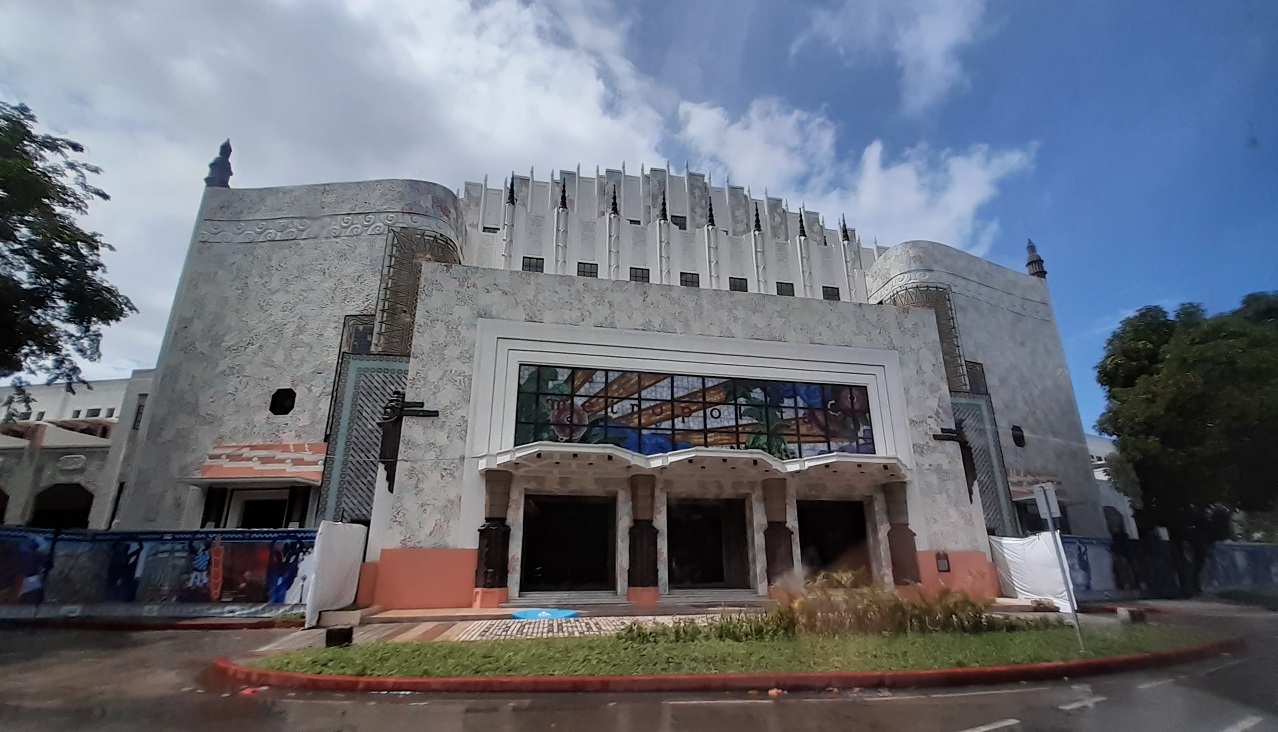Celebrating Art Deco’s centennial anniversary in 2025, the global movement of design and style started in 1925 with the opening of the International Exhibition of Modern Decorative and Industrial Arts in Paris.
France wanted to show the world that it was the leader in design moderne influencing decorative arts, fashion, jewelry, and architecture. It was only in the 1960s that it would be known as Art Deco from its French exposition name.
Stylized and abstracted ornamental forms, geometric motifs of zigzags and chevrons, and bright colors characterize art deco. Its distinguishing features were simplicity, symmetry, and repetition of design elements, often with a streamlined look.
Varied in its influences, art deco took inspiration from ancient Egyptian, Aztec, and Central American art as well as modern ships, trains, and cars, streamlined and efficient based on the principles of aerodynamics.
Art deco, Philippines
In the Philippines, art deco found its way through the architects who had studied in America and Europe such as Juan Arellano, Andres Luna de San Pedro, Juan F. Nakpil, Tomas Mapua, Pablo Antonio, and Fernando Ocampo. They incorporated local motifs in their art deco designs of theaters and cinemas, hotels, apartments, mansions, schools, and government buildings.
Juan Arellano (1888-1960) studied in Pennsylvania Academy of the Fine Arts in 1911 and transferred to Drexel Institute for his architecture degree. Back in Manila, he was one of the supervising architects at the Bureau of Public Works. During a study leave to the U.S. in 1927, Art Deco greatly influenced him.
His works included the Manila Metropolitan Theater, Legislative Building (now the National Museum of Fine Arts), Manila Central Post Office Building, 1926, Rizal Memorial Sports Complex, 1934; and Old Iloilo City Hall, Iloilo 1935. He also designed the Bulacan Capitol Building (1930), Sariaya Municipal Hall, Quezon (1931), and the Old Jaro Municipal Hall, Iloilo (1934), all existing and well maintained today.
As art deco celebrates its 100th year, many art deco structures in the country have been destroyed, demolished, or neglected and falling into ruins. A few have been renovated, including the following:
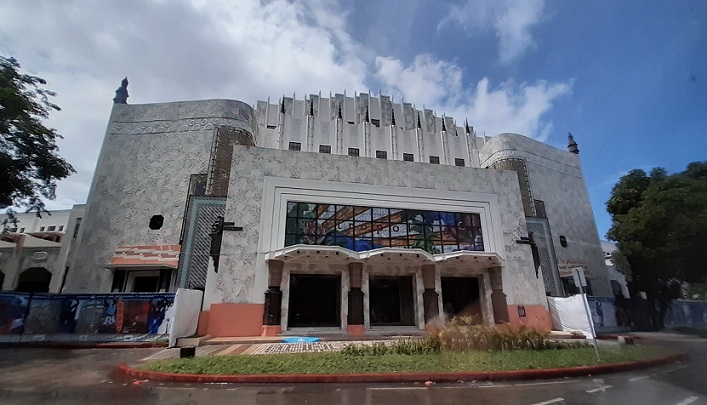
Manila Metropolitan Theater (Plaza Lawton, Manila): Described as the forefront of art deco style in the country, Juan Arellano designed it in Tropical Art Deco. Inaugurated on December 10, 1931, its façade has a proscenium-like central window of stained glass that corresponds with the Main Theater inside.
Tropical flair envelops the whole structure. The Main Theater ceiling is decorated with bas-reliefs of mangoes, bananas, bamboo, bird-of-paradise flowers, and tropical leaves designed by Isabelo Tampinco. Colorful and decorated tiles resembling batik patterns adorn the facade walls, as well as zigzags and curvy lines. Floral and geometric decorations abound.
Seriously damaged during World War II, it was renovated once more in 2017 and reopened in 2021for its 90th year anniversary.
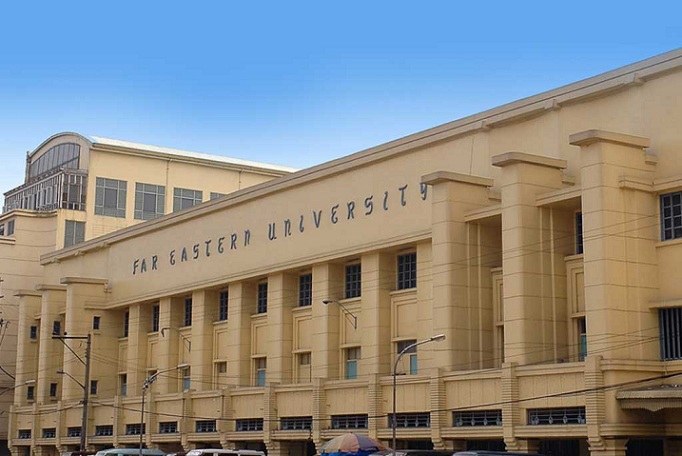
FEU Buildings (Sampaloc, Manila): Described by UNESCO as “the largest ensemble of Art Deco architecture that survives in Manila today,” it consists of the Nicanor B. Reyes Sr. Hall, Admissions Building, Architecture and Fine Arts Building, Administration Building, and Science Building. Constructed between 1939-1950, its architect Pablo Antonio Sr. focused on the symmetry of the buildings in terms of dimension, style, color, and location. The Nicanor Reyes Hall is the oldest structure; its bold projecting piers in front underscores the interplay of horizontal and vertical elements in its design.
In 2005, UNESCO bestowed the Asia Pacific Heritage Award for Cultural Heritage to Far Eastern University for “the outstanding preservation of its Art Deco structures.”
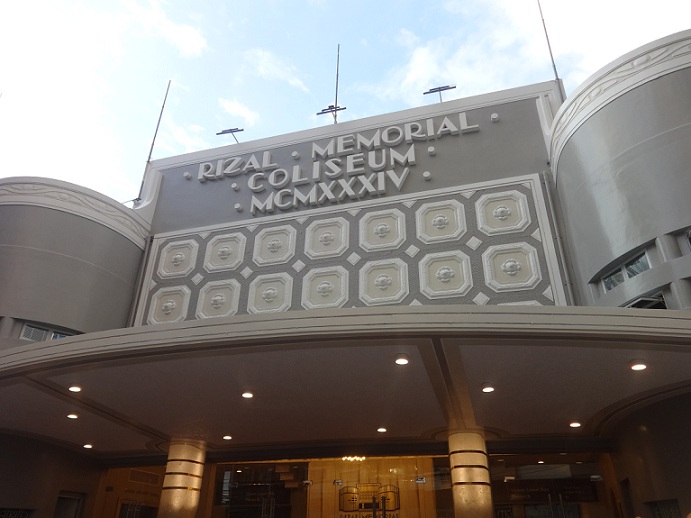
Rizal Memorial Coliseum (P. Ocampo St.,Vito Cruz, Manila): It is the country’s oldest sports complex and Southeast Asia’s only art deco coliseum. Originally, it was an indoor arena built as a tennis stadium in 1934, and designed by Juan Arellano) in the art deco style of Streamline Moderne.
Destroyed during World War II, it was reconstructed in 1953 for the 1954 Asian Games. In 2019, a major restoration was undertaken for the 30th SEA Games, headed by heritage architect Gerard Lico.
Using archival materials, many of Coliseum’s art deco elements were restored such as the rounded posts with built-in lighting fixtures in the main entrance and glass walls replaced the metal grills. Two boarded up original porthole windows restored as well as the grillwork with T & S (Tennis Stadium), its original name.
The 2019 restoration retained and patched the terrazzo flooring with triangular decorations. Central air conditioning was added as well as a Visitor Center and Gallery that exhibits photographs and memorabilia of national and regional sports events.
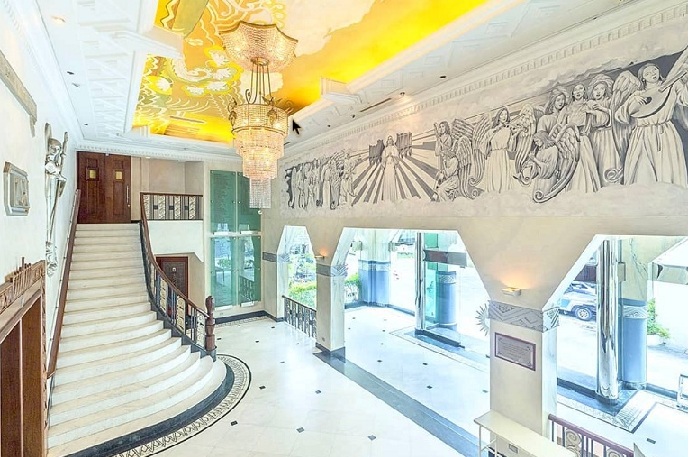
Saint Cecilia’s Hall, St. Scholastica College, Malate, Manila: A concert hall, it opened in 1932, designed by Andres Luna de San Pedro (1887-1952) in the Egyptian art deco style. Included are Catholic elements such as stylized chrome-finished cherubs and a central bas-relief of Saint Cecilia, the patron saint of music, in the façade of its main entrance.
Priceless heritage
With a vitality of its own, art deco structures embody the creativity and craftmanship of countless and nameless artisans, carpenters, masons, blacksmiths, wood carvers —workers whose hard work resulted in structures that we get to see and enjoy today.
